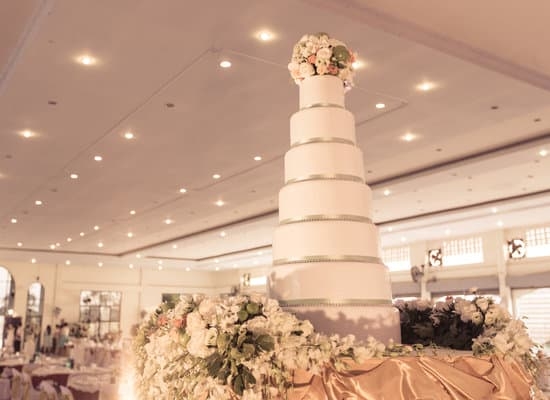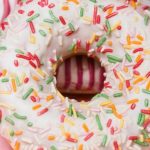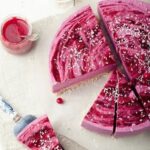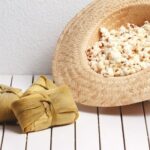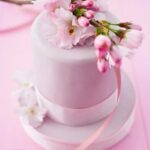Are you interested in learning how to practice cake decorating without frosting? This article will guide you through the importance of honing your skills in this manner, providing you with the necessary tools and techniques to improve your cake decorating abilities. Mastering the art of cake decorating without relying on frosting can help you enhance your creativity, precision, and overall craftsmanship when working on cakes.
Practicing cake decorating without frosting allows you to focus on various aspects of design and technique that may be overlooked when using frosting as a primary decoration method. By mastering this skill, you can elevate your cake decorating abilities to new heights and create stunning edible works of art. Whether you are a beginner looking to improve your skills or an experienced baker wanting to expand your repertoire, practicing without frosting can be a rewarding challenge.
In the following sections, we will explore the materials needed for practicing cake decorating without frosting, different techniques to try out, creating fondant decorations, making royal icing decorations, practicing piping techniques, crafting edible cake toppers, and exploring various cake design ideas for your practice sessions. This comprehensive guide will provide you with everything you need to kickstart your journey into the world of cake decorating without relying on traditional frosting methods.
So, get ready to unleash your creativity and take your cake decorating skills to the next level.
Materials Needed
For those looking to hone their cake decorating skills without the mess and hassle of using frosting, there are several materials that are essential for practicing in a fun and efficient manner. Here is a list of tools and ingredients required for practicing cake decorating without frosting:
Dummy Cake
A dummy cake serves as the perfect canvas for practicing your cake decorating skills without wasting actual cake. These are usually made of foam or other materials that mimic the texture and size of a real cake, providing a stable base for your decorations.
Fondant
Fondant is a versatile material that can be used to create intricate decorations for cakes without the need for frosting. It comes in various colors and can be rolled out, shaped, and molded to create different designs such as flowers, figurines, and patterns.
Modeling Tools
Having a set of modeling tools is essential for working with fondant and other decorative elements. These tools help in shaping, detailing, and adding textures to your creations with precision.
Edible Colors
To add vibrant hues to your fondant decorations, edible food colors are a must-have. These come in liquid or gel form and can be mixed to create custom shades for your designs.
With these materials at hand, you can practice cake decorating without frosting efficiently and creatively, allowing you to experiment with different techniques and designs before moving on to actual cakes.
Techniques
Practicing cake decorating without frosting can be a fun and creative way to hone your skills before diving into the world of buttercream and fondant. One technique to practice is using fresh fruit and nuts to decorate cakes. Sliced strawberries, raspberries, or blueberries can add a pop of color and freshness to your cake design.
Nuts like almonds, pistachios, or pecans can provide texture and visual interest. Arranging these elements on a plain cake can help you develop an eye for balance and composition in your decorations.
Another method for practicing cake decorating without frosting is using edible flowers. Edible flowers are not only beautiful but also add a delicate touch to your cake designs. Make sure to use organic and pesticide-free flowers that are safe for consumption. Flowers like lavender, pansies, roses, or violets can be strategically placed on your practice cakes to create stunning visual effects. Experimenting with different flower arrangements can help you understand how different elements work together in a design.
When practicing cake decorating without frosting, consider incorporating chocolate decorations into your designs. Melted chocolate can be piped into various shapes or patterns on parchment paper and allowed to set before carefully placing them on top of your plain cake. Chocolate curls, shards, or drizzles can add elegance and sophistication to your creations. By mastering the art of chocolate decorations, you can elevate the look of your cakes without relying on traditional frosting techniques.
| Technique | Description |
|---|---|
| Fresh Fruit and Nuts | Using sliced fruits like strawberries or nuts such as almonds to decorate cakes for practice. |
| Edible Flowers | Incorporating organic flowers like lavender or roses onto plain cakes for visual appeal. |
| Chocolate Decorations | Creating intricate designs using melted chocolate that adds elegance to cake decorating practices. |
Fondant Decorations
- Rolling Out Fondant: To start, you will need fondant in the desired colors for your decorations. Roll out the fondant on a clean surface dusted with powdered sugar or cornstarch to prevent sticking. Use a rolling pin to achieve an even thickness.
- Cutting Shapes: Use cookie cutters or specialty fondant cutters to create shapes for your decorations. Alternatively, you can hand-cut shapes using a sharp knife or small fondant tools for more intricate designs.
- Adding Details: Once you have your basic shapes cut out, you can add details using impression mats, texture tools, or edible markers. Be creative and experiment with different techniques to enhance your fondant decorations.
Practicing fondant decorations allows beginners to hone their skills in shaping and designing without the added pressure of working with frosting. By creating various fondant decorations such as flowers, leaves, or geometric shapes, individuals can build their confidence in cake decorating techniques before moving on to more advanced projects that involve frosting.
Royal Icing Decorations
To start, mix the powdered sugar and meringue powder in a bowl before gradually adding water until you reach your desired consistency. The icing should be thick enough to hold its shape when piped but not too stiff that it’s difficult to work with. Divide the icing into small bowls if you plan on using multiple colors and add food coloring accordingly.
When making royal icing decorations, it’s important to use piping bags fitted with small round tips for fine details and larger tips for filling in larger areas. Practice creating dots, lines, swirls, and other basic shapes on parchment paper before moving on to decorating your practice cake.
Remember that royal icing dries quickly, so work efficiently to avoid any mishaps. With patience and practice, you’ll soon be able to create beautiful royal icing decorations for your cakes without the need for frosting.
Overall, practicing with royal icing decorations is a great way to hone your cake decorating skills without the mess and hassle of frosting. You can experiment with different designs and techniques while improving your piping skills along the way. Whether you’re a beginner looking to enhance your skills or a seasoned decorator wanting to try something new, royal icing decorations offer a fun and creative alternative to traditional frosting.
Piping Practice
Another technique for practicing piping without frosting is to use whipped cream or even toothpaste. These alternatives provide a similar texture to frosting, allowing you to get a feel for how the icing will behave when piped onto a cake. Additionally, using these substitutes can help you conserve your actual frosting for when you are ready to decorate a real cake.
One creative way to practice piping without frosting is by using melted chocolate. By melting chocolate and transferring it into a piping bag with various tips, you can create delicate decorations on wax paper that will mimic the look of piped frosting. This method not only helps in improving your hand movements but also adds an extra dimension to your decorating skills by working with different mediums.
| Alternative Materials for Piping Practice | Description |
|---|---|
| Silicone Baking Mat/Parchment Paper | Allows for practicing piping control with royal icing or buttercream |
| Whipped Cream/Toothpaste | Provides a similar texture to frosting for realistic practice |
| Melted Chocolate | Offers an alternative medium for creating delicate decorations |
Edible Cake Toppers
When it comes to cake decorating, edible cake toppers can add a touch of creativity and personalization to any baked creation. Whether you’re a beginner looking to enhance your skills or a seasoned baker in need of some practice, making edible cake toppers is a fun and effective way to improve your decorating techniques. By focusing on creating intricate and eye-catching decorations that don’t require frosting, you can sharpen your skills and unleash your creativity.
Materials Needed
To create edible cake toppers for decorating practice cakes, you will need a few essential tools and ingredients. Some common items include fondant or gum paste, food coloring gels or dusts for coloring, rolling pin, sculpting tools or cutters, edible glue or water for adhering pieces together, and parchment paper for easy handling.
These materials are readily available at most craft stores or online baking supply shops, making it convenient for you to stock up on everything you need to get started on your edible creations.
Techniques
There are various techniques you can use to make edible cake toppers for decorating practice cakes. One popular method is molding fondant into different shapes and figures using silicone molds or hand sculpting. You can also try using cookie cutters to create uniform shapes or experimenting with painting details onto the decorations using food-safe brushes.
Additionally, incorporating textures like quilting or ruffling can add depth and visual interest to your edible cake toppers. By exploring different techniques, you can expand your skill set and develop your own unique style when it comes to cake decorating without frosting.
Inspiration
If you’re looking for inspiration for creating edible cake toppers for decorating practice cakes, the possibilities are endless. From simple floral designs and geometric patterns to intricate figurines and themed embellishments, there are countless ideas out there waiting for you to explore.
Consider browsing online tutorials, cake decorating books, or attending workshops to spark your creativity and learn new techniques. Don’t be afraid to experiment with different colors, shapes, and styles – after all, practicing with edible cake toppers is all about honing your skills while having fun in the process.
Practice Cake Designs
Practicing cake decorating without frosting can be a fun and creative way to improve your skills without the mess and pressure of using actual frosting. Here are some ideas and inspirations for creating beautiful cake designs without the need for frosting:
- Use fresh fruit: Incorporating fresh fruit into your cake designs can add a pop of color and flavor. Try arranging slices of strawberries, kiwi, or blueberries in intricate patterns on top of your cake.
- Pipe with chocolate: Instead of using traditional frosting, practice piping techniques with melted chocolate. You can create elegant swirls, shapes, and even write messages on your cakes using different shades of chocolate.
- Create a naked cake: Embrace the trend of naked cakes by leaving the sides of your cake exposed. Focus on decorating the top with edible flowers, herbs, or even nuts and seeds for a rustic yet stylish look.
Using these techniques not only allows you to hone your decorating skills but also offers a unique alternative to traditional frosted cakes. Experiment with different ingredients and methods to discover what works best for your style and taste preferences.
Remember that practicing cake decorating without frosting is all about creativity and imagination. Don’t be afraid to try new ideas and techniques to create stunning designs that will impress friends and family at any event or celebration. With time and practice, you’ll become more confident in your abilities and eventually master the art of cake decorating without relying on frosting.
Conclusion
In conclusion, practicing cake decorating without frosting is a valuable skill for beginners looking to improve their techniques and creativity in the realm of cake decoration. By focusing on the intricate details of fondant decorations, royal icing designs, piping techniques, and edible cake toppers, aspiring decorators can hone their skills effectively. This unique approach not only allows for a hands-on experience in mastering various decorating methods but also provides a foundation for developing one’s personal style and aesthetic.
Moreover, learning how to practice cake decorating without frosting offers beginners the opportunity to experiment with different tools and materials in a low-pressure environment. By familiarizing themselves with the essentials such as fondant, gum paste, edible paints, and piping bags, decorators can build confidence and dexterity before venturing into more complex frosting techniques. This methodical approach helps in refining precision and attention to detail, essential attributes for creating visually stunning cakes that stand out from the rest.
Overall, delving into the world of cake decorating without frosting opens up a whole new avenue of creative possibilities for beginners. From mastering the art of fondant sculpting to perfecting intricate piping designs, this practice not only enhances technical skills but also fosters a deeper understanding and appreciation for the art of cake decoration.
So whether you’re just starting out or looking to enhance your existing skills, embracing the challenge of practicing without frosting is a rewarding journey that can lead to endless opportunities for growth and innovation in your craft.
Frequently Asked Questions
How Can I Practice Cake Decorating at Home?
One way to practice cake decorating at home is to start with simple techniques like using a piping bag with different tips to create various designs. You can also try experimenting with different colors and textures of icing to enhance your skills. Watching tutorials online and practicing regularly will help you improve your cake decorating abilities.
How Do You Practice Cake Writing Without Icing?
If you want to practice cake writing without using icing, you can try using other edible materials like fondant or chocolate. Roll out the fondant thinly and cut out letters to spell out words or messages on top of the cake.
Another option is to melt chocolate and use a piping bag to write on parchment paper before transferring it onto the cake once it has hardened.
How Do You Make a Cake Look Good Without Frosting?
Making a cake look visually appealing without frosting can be achieved by focusing on other decorative elements. For example, you can add fresh fruit, nuts, or edible flowers on top of the cake for a pop of color and texture.
Using powdered sugar or cocoa powder for a dusting effect can also give your cake a polished finish without traditional frosting. Experimenting with different garnishes and presentation styles will help elevate the overall look of your cake.

Welcome to our cake decorating blog! My name is Destiny Flores, and I am the proud owner of a cake decorating business named Cake Karma. Our mission is to provide delicious, beautiful cakes for all occasions. We specialize in creating custom cakes that are tailored specifically to each customer’s individual needs and tastes.

